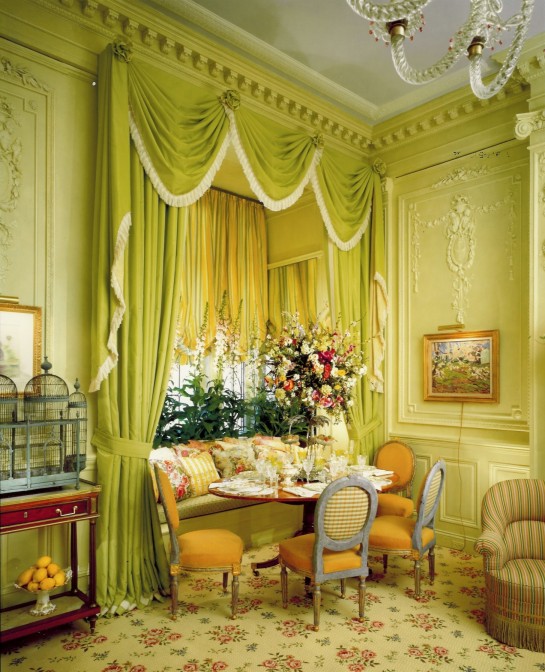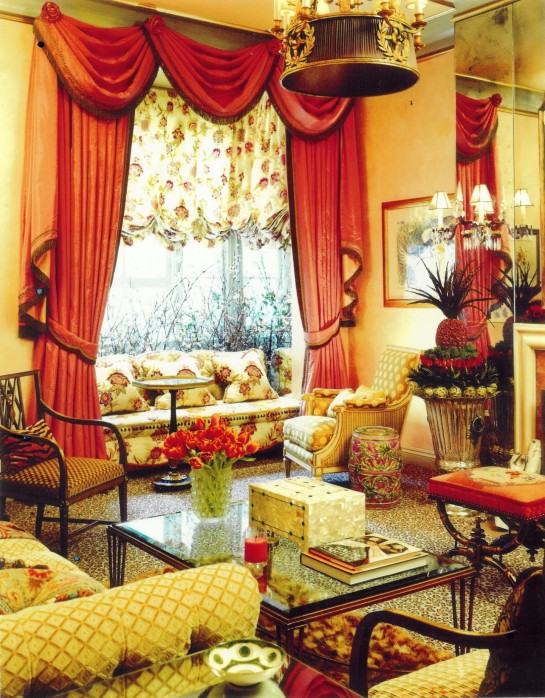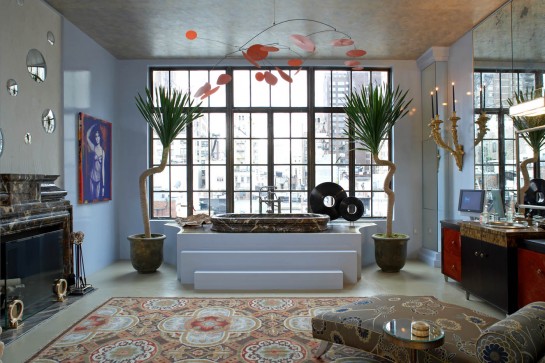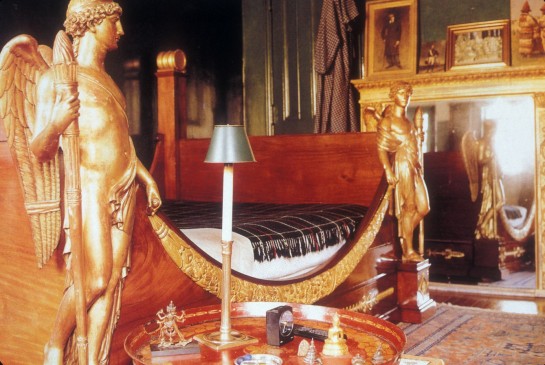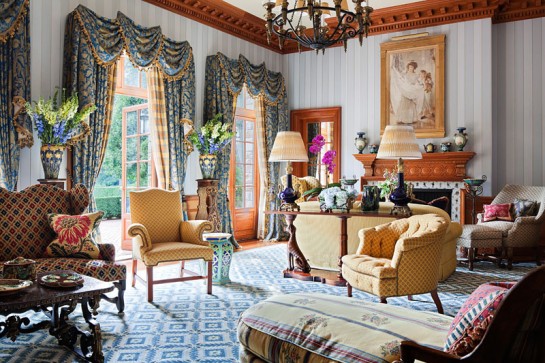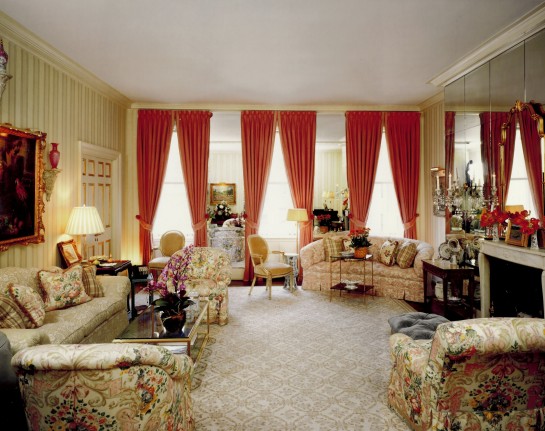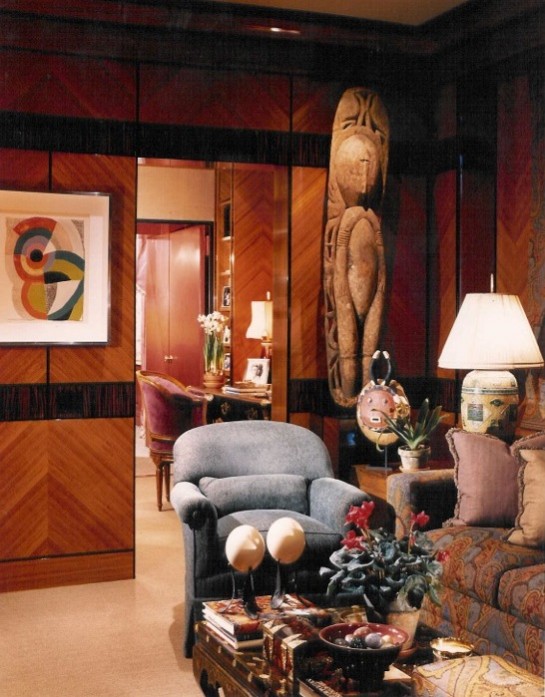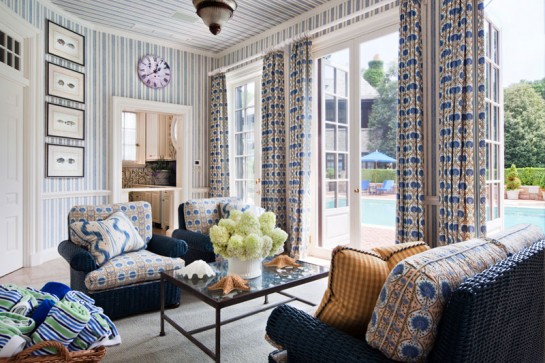…………………………
With an illustrious career spanning more than 30 years Scott Salvator has been celebrated on the pages of countess shelter magazines, and has created rooms for the Kips Bay Decorator Showhouse – the Academy Awards of interior design as he calls it – a record 4 times: in 1994, 1999, 2002, and 2007.
Our design editor Carl Lana has had a personal friendship with Scott for more years than either of them are willing to admit to, so when I conceived of the idea to interview him for a Master Class post Carl made the introduction.
We were invited to Scott’s insanely chic Upper East side apartment (honestly one of the most creative spaces I’ve ever seen!) for a candid chat. What Scott had to say about contemporary interior design; about what someone new to the industry needs to know to succeed; and about what he learned from Mario Buatta, Gary Crain, and Robert Metzger makes for invaluable insight every design professional will find helpful.
Carl Lana conducted the interview, here’s a recap.
Scott Salvator for Kips Bay 1999
…………………………
Scott Salvator for Kips Bay 2002
…………………………
Scott Salvator for Kips Bay 2007
…………………………
CL: A great deal has changed in the interior design industry in recent years – what is your take on it?
SS: Well, there’s still the luxury high-end, and then there’s everything else. The design industry had a boom in the 50’s, a recession in the 70’s, AIDS in the 80’s, another recession in the late 80’s through the early 90’s, and then the great recession of 2008. Each one of those took a little ‘ding’ out of our industry, and over that course of time design became increasingly more corporate – with an emphasis on profitability – much like the fashion industry. Unfortunately interior design isn’t perfume, underwear and t-shirts – so that while the fashion business model may work for Pottery Barn, Crate & Barrel and Ethan Allen, you can’t do ‘off-the-rack’ in a high-end interior design marketplace. And of course interior design is meant to be timeless, fashion is not.
You can indeed get a custom sofa from one of those manufacturers, but it will still take 12-14 weeks because they don’t carry stock, and you are limited in your number of choices – fabrics, leg finishes, arm styles etc. Design Within Reach has done it differently in that they curate a collection with a specific point of view and warehouse inventory for immediate delivery. They successfully skirt the line between the high-end and retail.
The changes are all ultimately about economics. The tax code changes made in Washington in 1981, which skewed a redistribution of wealth toward the top 2% in this country, were only meant to last a few years, but are still in effect today. Which means the chasm between the upper and lower classes in this county has widened to the point that there is little left of the middle class. For design professionals that means that you have to identify themselves as either a high-end designer – or a personal shopper, ‘television designer’, or as a ‘do-it-yourselfer’. And don’t misunderstand me, I have friends that are television designers, but you are either one or the other. You’re either creating one of a kind furnishings for your clients which are expensive and take a length of time to create by artisans, or your everyone else. There is no shortage of companies who understand that which points to the success of companies like CB2, Restoration Hardware, and West Elm.
There are still the mom-and-pop upholsterers, and the North Carolina firms who were once to-the-trade resources, but many of them have now decided to sell retail, take Baker for example. Who could blame them, they need to sell a product. Some say they are ruining the design industry but I disagree.
In Europe everything is retail. The difference there is that interior designers are licensed. I’d like to see that happen in the states because then we would be seen as having a profession. Imagine hiring an architect or contractor who was not licensed, it wouldn’t happen. They possess skills that are outside the realm of consumer’s understanding. Interior designers, in the wake of the recession and the instant access of the internet, have been devalued, which is unfair. I’ve spent a lifetime being educated in my craft, and that has value. If design were a licensed profession which garnered you a discount at retail establishments in this country everyone would still have access to products and furnishings at the same price, but those who hire a design professional would get the benefit of an individual with competent, tangible skills in creating living space.
.
.
CL: What kind of practical advise would you give a young, up-and-coming designer today?
SS: I think designers today need to understand that it’s a very difficult business. Like most entrepreneurs you work 7 days a week. You spend most of your time managing clients and vendors. And the larger your firm gets the more difficult your work becomes. If you have a passion for design, and it’s something you must do, then fine; but there are several decisions you must make. First, you must decide at what level you will be designing. Will you be doing corporate, hospitality, or residential? And if you decide you want to work in a truly high-end marketplace then you must go to school to learn interior design – and you MUST go to work for a well-known, seasoned professional in the industry.
If on the other hand you intend to act simply as a purchaser you should understand that you will need a huge client base to generate a profit, and that you will need a group of employees to manage projects. And finally, if you’re in design to become a celebrity, you’re in the wrong business. Go out in public like Paris Hilton without your underwear and get famous for being a tart. If on the other hand you’re in the business because you LOVE interior design, and are willing to work hard, you will in all likelihood succeed. I’m evidence of that.
.
.
And as we’ve decided to begin creating original video content here on the blog I thought I’d get Carl’s last question for Scott, and Scott’s answer in a clip;
Thank you indeed Scott Salvator for such a candid interview. We here on the blog feel very privileged to have had the opportunity to meet with you, and to share your insights and experiences. If you’d like to see more of Scott’s work you can check out his portfolio through this link. You can also follow this link to his website to learn more about his work.
.
Written by CJ Dellatore


